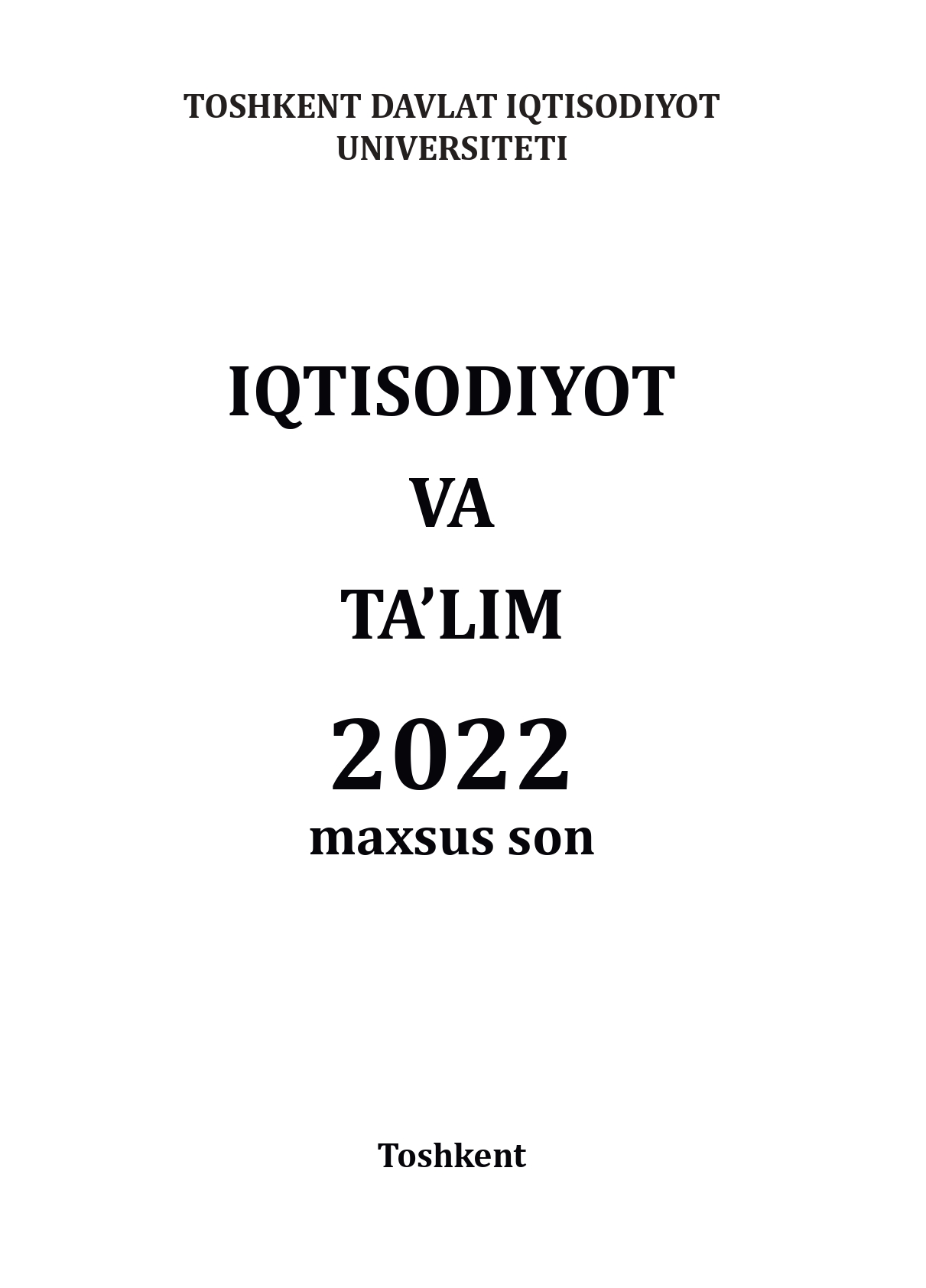Abstract
The poverty measurement is an important issue for every country. Although there have been conducted different investigations on this topic, the universal approach for its solution has not been developed yet. Thus, this paper is aimed at identifying and investigating the modern trends in estimating poverty. It is revealed that the use of non-traditional data bases as well as introduction of modern analytical tools, including artificial intelligence, are in the center of attention in investigating poverty issues. In its turn, these tools illustrate better performance in comparison with traditional ones.
References
Oʻzbekiston Respublikasi Vazirlar Mahkamasining “2030-yilgacha boʻlgan davrda barqaror rivojlanish sohasidagi milliy maqsad va vazifalarni amalga oshirishni jadallashtirish boʻyicha qoʻshimcha chora-tadbirlar toʻg‘risida”gi 83-son qarori, 2022 yil 22-fevral
Perry, Guillermo. Poverty reduction and growth: virtuous and vicious circles. World Bank Publications, 2006
Sachs, Jeffrey D. "Can extreme poverty be eliminated?." Scientific American 293.3 (2005): 56-65
Azariadis, Costas, and John Stachurski. "Poverty traps." Handbook of economic growth 1 (2005): 295-384.
Breunig, Robert, and Omer Majeed. "Inequality, poverty and economic growth." International Economics 161 (2020): 83-99.
Veit-Wilson, J. (1986). Paradigms of Poverty: A Rehabilitation of B.S. Rowntree. Journal of Social Policy, 15(1), 69-99. doi:10.1017/S0047279400023114
Davis, P.; Sanchez-Martinez, M. Economic Theories of Poverty the Research. 2015. Available online: https://www.bl.uk/ britishlibrary/~{}/media/bl/global/social-welfare/pdfs/non-secure/e/c/o/economic-theories-of-poverty.pdf (accessed on 17 July 2020).
Davids, Y.D.; Gouws, A. Explaining Poverty: A Comparison between Perceptions and Conditions of Poverty in South Africa. 2010. Available online: http://scholar.sun.ac.za/handle/10019.1/5318 (accessed on 1 May 2020).
Mhlanga, D. Financial Inclusion and Poverty Reduction: Evidence from Small Scale Agricultural Sector in Manicaland Province of Zimbabwe. 2020. Available online: http://repository.nwu.ac.za/handle/10394/34615 (accessed on 1 August 2020)
Mhlanga, D.; Ndhlovu, E. Socio-economic Implications of the COVID-19 for Smallholder Livelihoods in Zimbabwe. Preprints 2020.
Alkire, Sabina, et al. "Multidimensional poverty index 2011: brief methodological note." (2011).
Elvidge, Christopher D., et al. "A global poverty map derived from satellite data." Computers & Geosciences 35.8 (2009): 1652-1660
Isnin, Rusnita, Azuraliza Abu Bakar, and Nur Samsiah Sani. "Does Artificial Intelligence Prevail in Poverty Measurement?." Journal of Physics: Conference Series. Vol. 1529. No. 4. IOP Publishing, 2020.
Li, G., Cai, Z., Qian, Y., & Chen, F. (2021). Identifying urban poverty using high-resolution satellite imagery and machine learning approaches: Implications for housing inequality. Land, 10(6), 648.

This work is licensed under a Creative Commons Attribution-ShareAlike 4.0 International License.
Copyright (c) 2022 Economics and education
